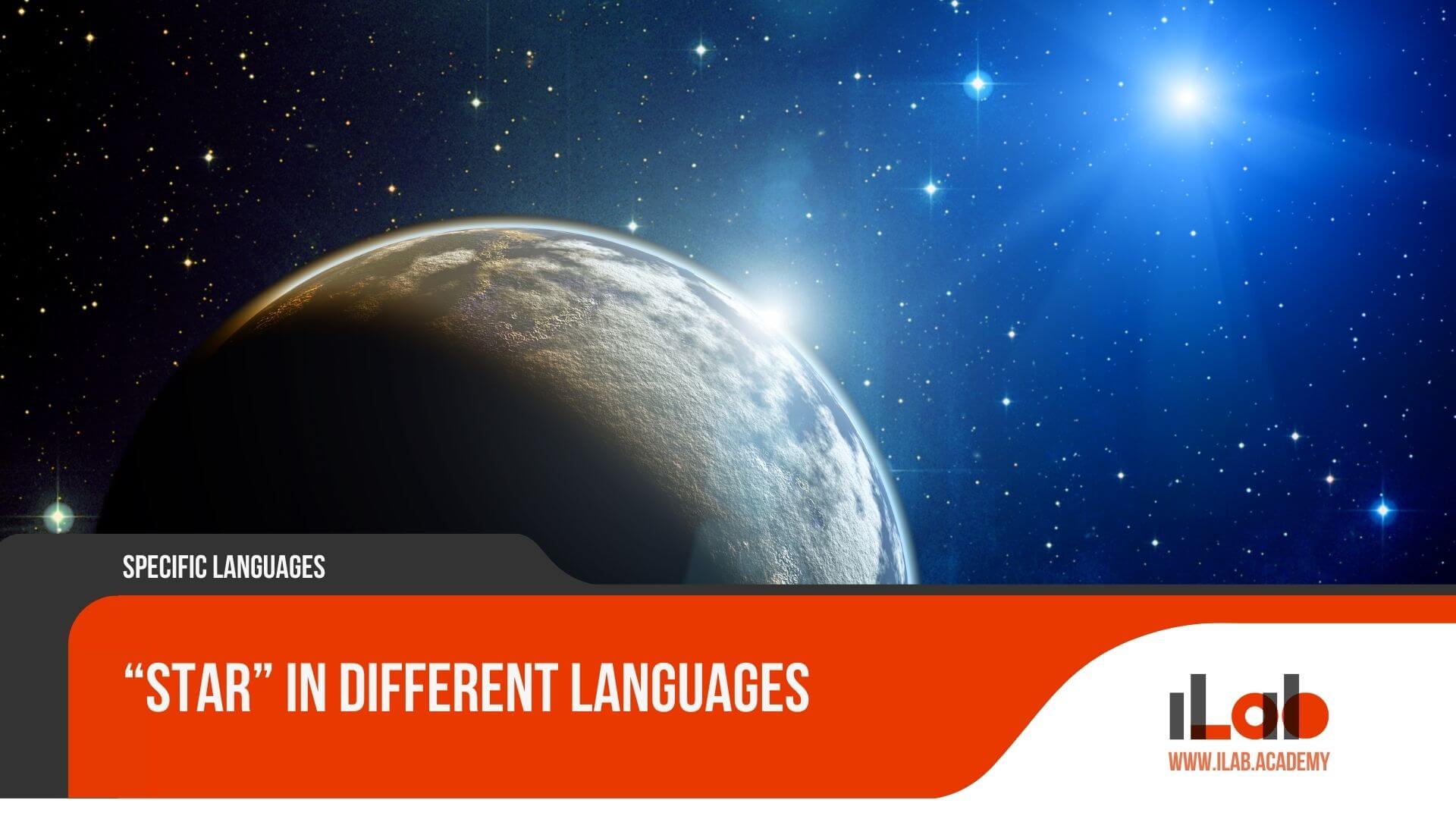Table of contents
The term ‘star’ serves as a linguistic vessel, carrying with it millennia of human observation, myth, and scientific inquiry. Across the globe, cultures have looked up to the night sky and named those twinkling celestial bodies in ways that resonate with their unique linguistic heritage and worldview. From the Latin-derived ‘stella’ in Romance languages to the ‘Hoshi’ in Japanese, each term encapsulates a fragment of human fascination with the cosmos. As we explore the etymology and cultural significance behind the word ‘star’ in different languages, we invite readers to ponder on the profound connections between humanity and the universe, revealing how our interpretations of the stars reflect broader themes of curiosity, exploration, and shared human experience.
Key Takeaways
- Stars’ names reflect a rich linguistic diversity, showcasing cultural and historical significance worldwide.
- Ancient languages like Latin and Greek have heavily influenced modern astronomical terminology.
- The word ‘star’ has evolved across languages, indicating a universal fascination with celestial bodies.
- Understanding ‘star’ in different languages highlights interconnectedness in human perception of the cosmos.
The Stellar Connection: “Star” and Human Culture
Throughout history, stars have served as navigational guides, inspired myths and legends, and played a pivotal role in the advancement of science, underscoring their deep-rooted significance in human culture across the globe. This celestial fascination isn’t merely a testament to humanity’s quest for knowledge but also highlights the stars’ integral role in shaping various aspects of human civilization. From ancient mariners relying on the constellations to chart their course across the open seas to the philosophers and scientists who gazed upwards to unlock the universe’s secrets, stars have been central to human exploration and understanding.
The universal appeal of these luminous objects is evident in the myriad of stories and beliefs that different cultures have woven around them. Stars have been deified, feared, revered, and studied, but above all, they have been a source of wonder and inspiration. This shared human experience, transcending geographical and cultural boundaries, provides a foundation for exploring the linguistic diversity in naming these celestial bodies.
Understanding the significance of stars in human culture is crucial for appreciating the richness and variety of languages that describe them. It sets the stage for a deeper exploration into how different cultures have linguistically encapsulated their admiration and respect for the night sky. By examining the etymology and cultural context of the word ‘star’ across languages, we gain insight into humanity’s collective and enduring fascination with these distant, shimmering points of light that illuminate our nights and our imaginations.
“Star” in Romance Languages: A Galaxy of Latin Roots
Building on the universal significance of stars in human culture, this discussion now turns to the Romance languages, where the word ‘star’ reveals a fascinating tapestry of shared Latin roots. Delving into languages such as Spanish, French, Italian, Portuguese, and Romanian, we uncover a linguistic constellation that illuminates the profound influence of Latin on its descendants. This shared etymology not only highlights the interconnectedness of these languages but also reflects the enduring legacy of Latin in shaping modern linguistic landscapes.
- Spanish and Portuguese share the term ‘estrella’ and ‘estrela’, respectively, both deriving from the Latin word ‘stella’. This common origin underscores the close linguistic and cultural ties between the Iberian Peninsula and its languages.
- French offers a slight variation with ‘étoile’, evolving from the Old French ‘estoile’, which also traces back to the same Latin root. This evolution showcases the dynamic nature of language, adapting and changing over time while still retaining its core identity.
- Italian maintains a direct lineage to Latin with ‘stella’, illustrating the conservative nature of Italian in preserving Latin vocabulary. This close relationship highlights the role of Italian as a bridge between ancient and modern Romance languages.
- Romanian presents ‘stea’, a testament to the resilience of Latin vocabulary, even in languages that have experienced significant external influences. Romanian’s retention of ‘stea’ exemplifies the enduring impact of Latin on the linguistic identity of Romance languages.
Through these examples, we see the galaxy of Latin roots in the Romance languages, offering insights into the historical and cultural journeys that these words have undergone. This exploration not only enriches our understanding of linguistic evolution but also celebrates the shared heritage of humanity’s fascination with the stars.
“Star” Through the Germanic Lens
Turning our gaze to the Germanic languages, we observe a fascinating constellation of terms for ‘star’, ranging from German (Stern) to English (star), Dutch (ster), and the Scandinavian languages (stjärna in Swedish), each reflecting the unique linguistic heritage and evolutionary path within this language family. Despite their geographical and cultural disparities, the Germanic languages share a common ancestor, which is mirrored in the lexical roots of the word for ‘star’. The similarities and differences in the word for ‘star’ across these languages not only reveal the interconnectedness of the Germanic linguistic family but also highlight the individual evolutionary paths that each language has taken.
To give a clearer picture of this linguistic constellation, let’s glance at a comparative table:
| Language | Word for ‘Star’ | Pronunciation (Phonetic) |
|---|---|---|
| German | Stern | ʃtɛʁn |
| English | Star | stɑːr |
| Dutch | Ster | stɛr |
| Swedish | Stjärna | ɧæːɳa |
This table not only serves as a guide to pronouncing ‘star’ in these languages but also subtly points out the phonetic similarities and divergences amongst them. It’s clear that while the words share a common root, reflecting their Germanic origins, the evolution of language brought about by time, geography, and culture has led to unique variations.
Understanding the word ‘star’ in Germanic languages offers a glimpse into the rich tapestry of human communication and our collective endeavor to name the cosmos. It showcases how even as languages diverge and evolve, they carry with them a shared history and a common attempt to make sense of the universe.
Slavic Night Skies: Linguistic Stardust
Exploring the Slavic languages reveals a unique constellation of terms for ‘star’, including Russian (звезда, zvezda), Polish (gwiazda), and Czech (hvězda), each carrying its own linguistic and cultural nuances. This exploration into the Slavic lexicon not only highlights the beauty and diversity of these languages but also showcases the deep connections humans have with the night sky, transcending cultural and linguistic boundaries.
- Russian (звезда, zvezda): In Russian, the word ‘звезда’ evokes a rich tapestry of cultural and historical associations, from ancient folklore to modern scientific achievements in space exploration. This term encapsulates the nation’s long-standing fascination with the cosmos, blending traditional narratives with contemporary aspirations.
- Polish (gwiazda): The Polish ‘gwiazda’ carries with it a melody of meanings, from the literal celestial bodies twinkling in the night sky to metaphorical uses denoting someone of exceptional talent or beauty. It is a word that bridges the gap between the tangible universe and the intangible qualities of human aspiration and admiration.
- Czech (hvězda): In Czech, ‘hvězda’ not only refers to a star in the night sky but also symbolizes guidance and direction, reflecting the historical use of stars for navigation. This term illustrates the pragmatic relationship between humans and the stars, serving both as objects of wonder and practical tools.
- Cultural Significance: Across these Slavic languages, the word for ‘star’ transcends its astronomical definition, embodying a wealth of cultural, historical, and emotional significance. These terms serve as linguistic vessels, carrying centuries of stories, beliefs, and knowledge that connect humanity to the vast universe.
Understanding the linguistic nuances and cultural contexts of ‘star’ in Slavic languages enriches our appreciation of both the diversity of human languages and our collective fascination with the cosmos.
Asian Languages: A Constellation of Terms for “Star”
After examining the linguistic diversity of ‘star’ in Slavic languages, our journey now brings us to Asia, where a constellation of terms further illuminates the global tapestry of celestial nomenclature. The Asian continent, with its rich tapestry of cultures and languages, offers a fascinating array of terms for ‘star’, each reflecting unique linguistic traditions and cultural perspectives. From the characters and symbols of East Asian languages to the phonetic richness of South Asia, these terms not only denote the celestial objects that have fascinated humanity but also embody the aesthetic and philosophical nuances of each culture.
Here is a glimpse into how ‘star’ is articulated in some Asian languages:
| Language | Term for ‘Star’ | Phonetic Transcription |
|---|---|---|
| Mandarin Chinese | 星星 | xīngxing |
| Japanese | 星 | hoshi |
| Hindi | तारा | tārā |
In Mandarin Chinese, ‘星星’ (xīngxing) offers a visual symmetry that mirrors the twinkling of stars, while ‘星’ (hoshi) in Japanese simplifies this image into a single character, capturing the singular beauty of a star. Hindi’s ‘तारा’ (tārā), with its melodious tone, evokes the timeless allure of the night sky.
These terms not only enrich our global lexicon but also provide insights into how different cultures perceive and relate to the cosmos. As we explore these linguistic constellations, we are reminded of the shared human fascination with the stars that light our night skies, bridging languages and cultures under the universal canopy of the cosmos.
African Interpretations of “Star”
Venturing into the heart of Africa, we uncover the continent’s rich linguistic landscape as it pertains to the celestial term ‘star’, a concept that is as varied and vibrant as its cultures. This exploration not only illuminates the diversity of African languages but also highlights the deep connections between African societies and the cosmos. The word ‘star’ resonates with cultural, spiritual, and navigational significance across the continent, reflecting a multitude of interpretations and beliefs.
- Swahili (East Africa): In Swahili, ‘star’ is ‘nyota’. This term encapsulates both the astronomical object and its symbolic interpretations of destiny and navigation, underscoring the importance of stars in guiding travelers and in shaping the futures foretold by astrologers.
- Zulu (South Africa): The Zulu word for ‘star’ is ‘inkanyezi’, which signifies not only the celestial body but also embodies notions of hope and guidance. Stars are culturally significant in Zulu folklore, often associated with the ancestral spirits guiding their descendants.
- Amharic (Ethiopia): In Amharic, the term ‘ኮከብ’ (kokeb) represents ‘star’, reflecting the country’s ancient astronomical knowledge. Ethiopian stargazing practices are deeply intertwined with both Christian and pre-Christian traditions, highlighting the celestial bodies’ profound spiritual significance.
- Hausa (West Africa): The Hausa term for ‘star’ is ‘tāuraro’, which also conveys the broader meanings of destiny and the divine. Stars in Hausa cosmology are seen as indicators of God’s omnipresence and omniscience, guiding humanity in both physical and spiritual journeys.
Through these linguistic lenses, we appreciate the multifaceted interpretations of ‘star’ in Africa, each offering unique insights into the continent’s profound connection with the cosmos.
“Star” in Middle Eastern and Semitic Languages
Turning our gaze to the Middle East, we delve into the etymological and cultural depths of how the concept of ‘star’ is articulated in Arabic (نجم, najm) and Hebrew (כוכב, kochav), showcasing the region’s rich linguistic heritage. These languages, steeped in history and tradition, offer a fascinating glimpse into the ways ancient civilizations conceived of and related to the celestial bodies that adorned their night skies.
In Arabic, the word “najm” conveys not just the astronomical object but is imbued with connotations of brightness and guidance. Stars have historically played a significant role in Arabic culture, not only in the realm of astronomy but also in navigation across the vast deserts of the Arabian Peninsula. This dual utility is echoed in literature and poetry, where stars often symbolize hope, direction, and the divine.
Hebrew, with its deep biblical roots, presents “kochav” as a term that carries both literal and metaphorical meanings. In the context of the Hebrew Bible, stars frequently represent multitude and blessing. Moreover, they are seen as symbols of divine promise and guidance, reflecting a profound relationship between the cosmos and spiritual beliefs.
Both languages, through their respective words for ‘star,’ encapsulate a broader cultural and historical narrative. They highlight how, across centuries, humans have looked to the stars not just for scientific understanding but for inspiration, guidance, and a sense of connection to something greater than themselves. Through “najm” and “kochav,” we observe the enduring human endeavor to find meaning in the night sky, a testament to our shared fascination with the cosmos.
Indigenous and Aboriginal Skylore: Words for “Star”
Exploring the rich tapestry of indigenous and Aboriginal cultures unveils a diverse lexicon for ‘star’, each term resonating with unique stories of creation, cosmology, and the natural world. These languages encapsulate not only a way of naming but also a profound connection to the skies, reflecting a deep understanding and respect for the universe’s mysteries. Here, we delve into the significance of ‘star’ across various indigenous and Aboriginal languages, shedding light on the cultural richness that defines humanity’s relationship with the cosmos.
- Narrative Embodiment: In many indigenous cultures, the word for ‘star’ is not just a label but a narrative embodiment. It carries tales of ancestral heroes, spiritual guides, and creation stories, linking the past with the present and the earth with the sky.
- Cosmological Significance: The indigenous term for ‘star’ often reflects its role in cosmology and seasonal cycles, guiding agricultural practices, navigation, and ceremonial rituals. These words are keys to understanding the intricate web of life and the universe’s rhythms.
- Linguistic Diversity: The variety of terms for ‘star’ in indigenous languages highlights the linguistic richness and diversity of these cultures. Each term offers a unique perspective on the night sky, influenced by geographical location, climate, and cultural beliefs.
- Cultural Preservation: Recognizing and respecting indigenous words for ‘star’ contribute to the preservation of these languages and their associated knowledge. It acknowledges the importance of cultural diversity in enriching our global understanding of the universe.
The Linguistic Evolution of ”Star”: From Antiquity to Modern Astronomy
Having examined the rich linguistic and cultural tapestry woven by indigenous and Aboriginal terms for ‘star’, we now shift our focus to the evolution of this nomenclature through the ages, particularly with the advent of classical languages and modern astronomy. The influence of ancient languages, such as Greek and Latin, on the terminology used in contemporary astronomy is undeniable. These classical tongues provided not just a lexicon but a foundation for the scientific discourse that followed.
The term ‘star’ itself is steeped in etymological history, tracing back to the Old English ‘steorra’, which in turn has roots in the Proto-Germanic *sternô, *sternon. However, it is the Latin word ‘stella’ and the Greek ‘astēr’ that have had a significant impact on the nomenclature of celestial bodies in the modern era. The adaptation of these ancient words into the scientific lexicon underscores a continuity of human curiosity and wonder about the heavens.
| Ancient Language | Word for “Star” |
|---|---|
| Latin | Stella |
| Greek | Astēr |
| Old English | Steorra |
This linguistic journey from antiquity to modern scientific discourse illustrates how the legacy of classical languages has been preserved and adapted in the field of astronomy. The enduring nature of these terms not only reflects the historical depth of astronomical studies but also highlights the universal fascination with the stars that transcends cultural and temporal boundaries. Through the ages, as our understanding of the cosmos has expanded, so too has our lexicon, yet the ancient roots of our celestial nomenclature remain ever present.
«Estrella» en distintas lenguas
„Stern“ in verschiedenen Sprachen
Frequently Asked Questions
How Have Modern Scientific Discoveries About Stars Influenced the Creation of New Terms or Phrases in Languages That Traditionally Had a Limited Vocabulary for Celestial Bodies?
Modern scientific discoveries regarding stars have significantly influenced the development of new terminology in languages that previously possessed a limited celestial vocabulary. This expansion reflects an increased understanding of the universe, prompting the creation and adoption of specialized terms to describe new phenomena and classifications. Consequently, these linguistic additions enrich cultural narratives about the cosmos, facilitating a more nuanced discourse on celestial observations and theories within diverse linguistic communities.
In What Ways Have Linguistic Representations of ‘Star’ Been Utilized in Popular Culture, Such as in Movies, Music, and Literature, Across Different Languages and Cultures?
Linguistic representations of ‘star’ have significantly permeated popular culture across various languages and cultures, illustrating the universal allure of these celestial bodies. In movies, music, and literature, the term ‘star’ transcends its astronomical definition, symbolizing hope, destiny, and fascination. This widespread cultural integration underscores the deep-rooted connection between humanity and the cosmos, reflecting the diverse yet unified interpretations of ‘star’ in global artistic and creative expressions.
How Have the Meanings and Connotations of the Word ‘Star’ in Various Languages Evolved in Response to Changes in Societal Values, Technological Advancements, and Globalization?
The evolution of the word ‘star’ in various languages reflects broader societal shifts, technological progress, and the forces of globalization. As societies have advanced, the connotations and meanings attributed to ‘star’ have diversified, moving beyond mere celestial bodies to symbolize excellence, aspiration, and celebrity. This linguistic transformation mirrors changing values and the global exchange of ideas, illustrating how language adapts to capture new realities and aspirations across cultures.
Are There Any Unique Linguistic Phenomena, Such as Idioms or Metaphors Involving the Concept of a ‘Star,’ That Reveal Interesting Cultural Attitudes Towards Fame, Destiny, or the Cosmos in Certain Societies?
Exploring unique linguistic phenomena related to ‘star’ offers insight into cultural attitudes towards fame, destiny, and the cosmos. Various societies utilize idioms and metaphors centered around stars to reflect beliefs and aspirations. For instance, being called a “rising star” universally symbolizes emerging success or potential. Such expressions underscore the global fascination with stars, not only as celestial bodies but also as symbols embodying human hopes, dreams, and the profound sense of connection to the universe.
What Role Have Historical Trade Routes and Migrations Played in the Diffusion of the Concept of ‘Star’ and Its Linguistic Variations Across Different Regions and Language Families?
Historical trade routes and migrations have significantly influenced the diffusion of the concept of ‘star’ and its linguistic variations across regions and language families. These movements facilitated cultural exchanges, enabling the sharing of astronomical knowledge and terminology. Consequently, similarities in the word ‘star’ can be observed among diverse languages, reflecting not only shared etymological roots but also the universal human fascination with the night sky. This underscores the interconnectedness of human cultures through time.
Conclusion
The exploration of the term ‘star’ across diverse languages illuminates the profound connection between humanity and the cosmos. This linguistic journey reveals not only the shared wonder and curiosity that celestial bodies inspire but also the rich cultural significance embedded within each term. From ancient roots to modern interpretations, the word ‘star’ serves as a testament to humanity’s enduring fascination with the night sky, uniting different cultures under a common celestial canopy. This linguistic diversity enriches our collective understanding of the universe and our place within it.














